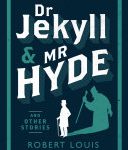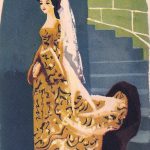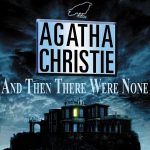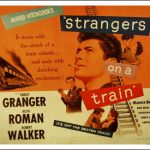And Then There Were Four, Backstory
And Then There Were Four is about five teenagers (Caleb, Evangeline, Saralinda, Antoine, and Kenyon) who learn that their parents are conspiring to kill them.
But few stories come from a single idea, or a single inspirational source.
MONSTER AND CHATTERBOX
Meet two of my five teenagers-on-the-run:
 CALEB: “One thing is true. You are not a little boy anymore. You are seventeen, and you don’t believe in Mommy keeping you safe or in friends having your back or in anybody, including you, knowing the difference between good and evil.”
CALEB: “One thing is true. You are not a little boy anymore. You are seventeen, and you don’t believe in Mommy keeping you safe or in friends having your back or in anybody, including you, knowing the difference between good and evil.”
Caleb has reason to believe he’s got a dangerous dissociative personality disorder—kind of like Dr. Jekyll and Mr. Hyde.
SARALINDA: “I used to love [The Thirteen Clocks] too until I realized that Princess Saralinda is one of those princesses who is  beautiful but has very little character and also she is under a curse that stops her from speaking her mind (which troubles me though I understand the curse is necessary for the plot). I like my name in any case and there are still things I like about the book but I can’t love it anymore is my point.
beautiful but has very little character and also she is under a curse that stops her from speaking her mind (which troubles me though I understand the curse is necessary for the plot). I like my name in any case and there are still things I like about the book but I can’t love it anymore is my point.
“However I’m reminded of Princess Saralinda every time I don’t tell my mother what I think.”
From this, you will see that my character Saralinda (unlike her namesake from James Thurber’s novel) does not have a problem confiding her thoughts. Is Thurber’s Princess Saralinda an influence because I reacted against her? Absolutely!
I LIKE ME A SUPERVILLAIN
 If there’s to be a conspiracy of five parents, then to me it follows (as the night the day!) that one of them is a supervillain. I personally feel a supervillain should be super-smart.
If there’s to be a conspiracy of five parents, then to me it follows (as the night the day!) that one of them is a supervillain. I personally feel a supervillain should be super-smart.
Since Dr. Colchester (my supervillain) is expert at manipulating people, I found myself thinking about Puppet Master, from the Fantastic Four comics.
By the way, Puppet Master happens also to be a genuinely caring father. Confusing . . . and I wanted confusion to bedevil my characters.
PLOTTING FOR DUMMIES
 Okay, so my plot shamelessly marries aspects of And Then There Were None by Agatha Christie, Strangers on a Train by
Okay, so my plot shamelessly marries aspects of And Then There Were None by Agatha Christie, Strangers on a Train by  Patricia Highsmith, and The Grounding of Group 6 by Julian F. Thompson.
Patricia Highsmith, and The Grounding of Group 6 by Julian F. Thompson.
However, when you’re working with a large cast of characters, a lot of settings, and a bunch of complications (and you’re not Christie, Highsmith, or Thompson), you use some odd tricks to figure things out—so, allow me to explain my use of coffee stirrers in the plotting process: [Link to video.]
WHY, WHY, WHY?
Five villains means five motives—or more, if one of them happens to be playing a deeper game. (Hint: Oh yes, that’s happening.)
Full disclosure, one day over lunch, I got help with the brainstorming of possible motivations, from Holly Black, Delia Sherman, Cassandra Clare, Joshua Lewis, Paolo Bacigalupi, Franny Billingsley, and Sarah Rees Brennan. (Yes, I know.)
Here’s a peek at the ideas the collaboration came up with, and then what I chose to do: Link to video.
“I’M ON A BOAT!”
The story begins in a collapsing outbuilding at a private boarding school north of New York City, but for large stretches, the kids are running for their lives. Which left me room for some improvisation, since setting is where I tend to make decisions on the fly—some of them purely to amuse myself, and to see if I can make them work. Like, the kids are cornered on Fire Island so: “I’m on a boat!”
 And then—because there is an element of logic to setting, too—if you’re on a boat on the Atlantic Ocean near NYC but you don’t know how to boat and then (of course) something happens, then where would you end up? Coney Island.
And then—because there is an element of logic to setting, too—if you’re on a boat on the Atlantic Ocean near NYC but you don’t know how to boat and then (of course) something happens, then where would you end up? Coney Island.
As Evangeline says, “A deserted amusement park by dead of night. What could be more fun?”
LOVE, BETRAYAL and REDEMPTION
 And Then There Were Four involves themes that I find obsessively interesting.
And Then There Were Four involves themes that I find obsessively interesting.
- A group in danger, where everyone pulls together, loves each other, saves each other. And if nobody outside the group believes in the danger—all the better. For this reason I adore the Scooby gang from the TV show Buffy the Vampire Slayer.
- “Sometimes, the people who mean you harm as the ones who say they love you.” -Matthew Walsh, in my earlier novel The Rules of Survival.
My belief as a storyteller is that while the events in a thriller must be over the top, the characters’ emotional reactions have to be as movingly real as I can make them.
For Caleb, Saralinda, Antoine, Kenyon, and Evangeline, I wanted their discovery of horrific betrayal to be redeemed, ultimately, by their discovery of each other. Because it turns out—and maybe this is a little bit of a spoiler, sorry—that Caleb is wrong.
Friends can have your back. And sometimes, too, they know you better than you do.
NOTE: This backstory originally appeared as a “Clues to My Crime” column on The Booklist Reader.